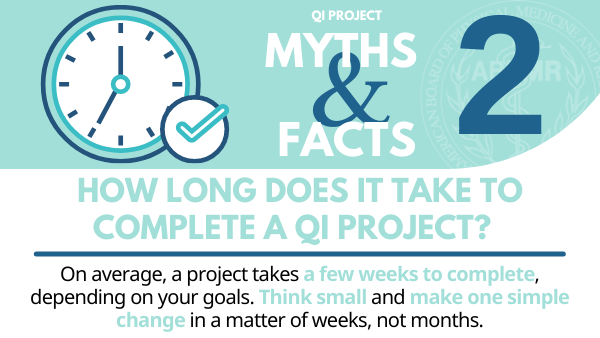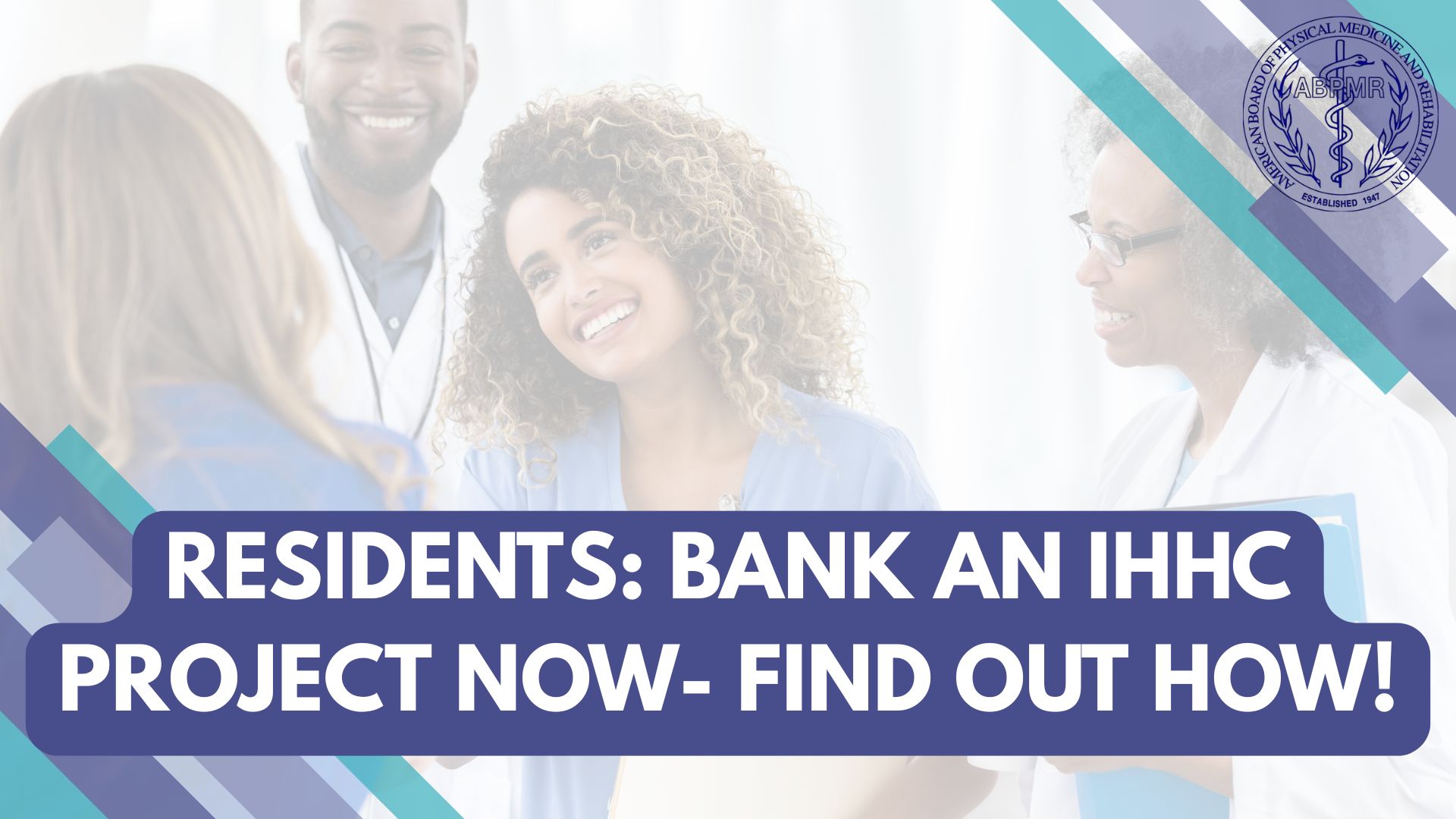CC
QI Project Series: Done in Weeks, Not Months

In this News Center series, we discuss common Quality Improvement (QI) project misconceptions and give the real facts about the process of completing a project. For more information on QI projects, to see project topics, and to begin your own project, visit the QI project resources page.
Myth: All QI projects take 6 months or more to complete.
Truth: On average, a project takes a few weeks to complete, depending on your goals. The purpose of a project is to think small and make one simple change in a matter of weeks, not months.
Remember, QI projects are meant to be small-scale and not complicated. You can complete a QI project in 2 weeks if you want! If it has these elements, it counts as a project:
- Identify a problem or inconvenience (think small and specific)
- Consult your team to determine what change needs to be made and how to make it
- Pre-measure the problem
- Make a change
- Re-measure after completing your project to see if you met your goal
- Write-up and submit your project
In the words of ABPMR board director and QI savant Christopher Garrison, MD, MBA, “If you can do it in six months, you can probably do it in three. If you can do it in three, you can do it in one.” You’re only making one small change to incrementally make your practice better, so see how specific you can get. If your project goal is specific and simple, it should be possible to complete in only several weeks.
Some recent examples…
Dr. Rod Thorley’s project goal was to perform a nutrition risk screen on 100 percent of patients within one month to effectively screen patients for malnutrition. After one month, Dr. Thorley had screened 93 percent of patients and successfully reached 100 percent in two months. His goal was simple and easy to implement in a matter of weeks, and this small change improved how his practice assessed patients for malnutrition. Read Dr. Thorley’s full project.
Dr. Alexandra Samas noticed that due to a frequent rotation of residents in her outpatient clinic, there was a lack of continuity in assessing lower back pain in patients. For her project, she provided the Oswestry Disability Index (ODI) survey for patients experiencing lower back pain to create a baseline assessment for each visit; her project goal was to have 75 percent of patients complete the ODI in five weeks. After just five weeks, 80 percent of patients had completed the ODI—Dr. Samas surpassed her goal after a little more than a month! Improving the continuity of care seems like a broad problem with lots of different contributing factors, but Dr. Samas chose one specific change she could make to lead to a result in just a few weeks. Read Dr. Samas’ full project.
Think small, then shrink your timeline
If you focus your project goal on a specific problem and a small change, the entire process will take an average of a few weeks. Remember to think small and focus on making an incremental change in your practice to improve one aspect of the care you provide. You’re not trying to solve every problem at once!
To see more QI project resources, visit the QI project resources page or the ABPMR News Center to see examples of completed projects. We recently added 12 new Guided QI Projects, for a total of 20 free options from the ABPMR— read descriptions of all the new projects here.

